- Air Homepage
- Alberta Air Quality
- Air Quality Reporting in Alberta
Your Comprehensive Guide to Air Quality Reporting in Alberta
This webpage provides a condensed summary of this long, detailed chapter on Air quality reporting in Alberta. See the official document here. It forms the conclusion to the Alberta Monitoring Directive.
Take a look at Alberta's air quality reporting regulations. Get the facts on Alberta's reporting requirements, data submissions, and compliance.
According to Alberta's Air Monitoring Directive (AMD), industries have to report air pollution accurately and consistently. It's important to keep the air clean.
Industries have to report how much pollution they release into the air. There are strict rules and special forms. Some of this data is sent securely online to a system called ETS.
It's easier to compare and understand submissions when everyone reports pollution the same way. Keeping track of air quality helps our government and other organizations protect the environment and following these guidelines helps industries preserve the health of our environment.
Section 1 - Introduction and Purpose
The chapter starts with rules and requirements for air quality reporting in Alberta along with and emissions data reporting. Here's a quick summary:
We will start with Interpretation (RC 1-A): This section defines and interprets terms used in Chapter 9, clarifies who is responsible for reporting in industrial operations and Alberta airsheds and defines what a "release" is amongst other things. Chapter 9 sets minimum requirements, standardizes reporting formats, establishes reporting frequencies and deadlines, and provides guidance for reporting air and emissions.
 A magical place with mysterious air
A magical place with mysterious airIndustrial operations have to comply with the reporting requirements outlined in this chapter. There are two parts to this chapter:
Part 1 covers industrial reporting, and
Part 2 covers Alberta airshed reporting.
Separating them makes the document easier to read. For ambient air monitoring, industrial operations and Alberta airsheds have different reporting responsibilities.
In cases where industrial operations change ownership, the original approval holder is responsible for compliance until the approval is officially transferred. It is important to note that Roles and Responsibilities, outlined in Section 1.6, says whoever does air monitoring has to prepare and submit data. Chapter 9 outlines guidelines and expectations for reporting air and emissions data.
Part 1 begins with...
Section 2 - Industrial General Requirements for air quality reporting in Alberta
Start with types of air quality reporting in Alberta: Industrial operations may have to submit air emission and ambient air monitoring data, details on when the provincial air quality standards, the Alberta Ambient Air Quality Objectives (AAAQO), were exceeded along with performance reports, monthly or quarterly reports, annual reports, emissions inventory reports, notifications, source monitoring reports, supplemental reports, and amendments to previously submitted data. It shall include these items:
- Cover letter that fits the document.
- Industrial operation and approval number.
- Responsible person's contact info.
- Identify who wrote and reviewed the report.
- Monitoring location.
- Reporting timeframe and unique identifier.
- Clear page numbers and report identification.
- Report generation date.
Reporting Forms: The Air Monitoring Directive (AMD) has reporting forms and templates. Unless otherwise authorized, reports should use the appropriate forms.
- Reports need to be signed off by the person responsible.
- Include a statement certifying the report's accuracy and completeness in the cover letter.
- The electronic submission system certifies electronic data.
Laboratory analysis reports shall be certified by authorized lab staff. Reports and related documents must be submitted electronically to the Director unless otherwise specified. Submission deadlines and naming conventions established in RC 2- (L to O) should be followed.
For contractors: If a company hires a contractor to do monitoring or reporting, they have to:
- Tell us what monitoring or reporting the contractor(s) did.
- Before submitting a report to the Director, ensure that it's accurate, comprehensive, and properly certified.
Section 3 - Submission of industrial data
The purpose of this section is to explain how industrial operations are to submit air quality and emissions data. This section outlines the specific requirements for submitting air quality and emissions data, ensuring accuracy, consistency, and compliance. Section 3 covers both ambient air monitoring and air emissions monitoring.
Data submission for ambient air monitoring:
Alberta's Ambient Air Quality Data Warehouse requires industrial operations to submit data electronically and unless otherwise authorized, this data should be submitted monthly.
Make sure the data has the specified number of significant figures as indicated below (in Sec 3.1.2) and to standardize the units of measurement. To indicate data quality (see Chapter 6), data must be submitted in a specific format outlined in the original document and metadata (information about monitoring stations and accounts) must also be submitted. Electronic calibration reports (see Chapter 7) are also required for monitoring equipment.
Submission of air emissions data:
Data from the Continuous Emissions Monitoring System (CEMS), which measures emissions from industrial processes, must be submitted electronically. Follow the regulations and guidelines, and stick to the specified deadlines.
When comparing emissions data with regulatory limits, it is important to consider significant figures and for consistent measurements, unit conversions may be needed. Data must have date and time labels.
Section 4 - Industry, Let the Director know...
if anything is causing or has caused an adverse effect on the environment.
Industrial operations have to report:
- substances they release into the environment that could cause harm,
- what needs to be reported, when, and how.
- Other reporting details, including contact info, which are required.
Any violation of their approval terms, like exceeding emission limits, must be reported right away, with the intention that safety and the environment are protected. When the air quality concentrations go above certain limits or there's a problem with your monitoring equipment, you have to report it right away. It's better to report something if you're not sure if it needs to be reported.
For air quality reporting in Alberta, there are specific procedures spelled out in (RC 4-A to F), and any issues or deficiencies must be fixed promptly. In support of emergency response and public health decisions, industrial operations must submit data on schedule and report air quality or equipment problems promptly.
Section 5 - Industrial Monthly and Quarterly Reports
Based on the regulations governing the industrial operation, these reports are essential for summarizing and evaluating the data collected during a certain period. Section 5 provides an overview and assessment of the data collected during a particular month or quarter. Reports like these help make sure industrial operations meet monitoring and reporting requirements.
This report's content depends on the monitoring and guidelines for air quality reporting in Alberta, given to the industrial operation by regulators. Reporting (see Section 2 above) outlines general report requirements they must follow. The regulatory agency, Alberta Environment and Protected Areas (AEPA), usually has an example report on the AMD website showing what a completed monthly or quarterly report should look like, what information needs to be included, and the required format.
Any industrial operation that is required to prepare monthly or quarterly reports based on its approval conditions must follow the guidelines in this section. The regulatory director needs to receive these reports by a set date. See the items marked "RC 5-A" to "Q" for the particulars, but here are a few highlights.
Monthly or quarterly reports should include a cover letter that provides specific information, like problems with monitoring equipment, deviations from monitoring methods, or other issues that might affect the data. Also, the report should detail any data issues, like data deletions, resubmissions, missed calibrations, or other problems that arose during monitoring.
If applicable, these reports should also summarize ambient air monitoring data. Information about air quality, monitoring stations, and any deviations from standards could be included. The report should compare the ambient air concentrations with established air quality standards, noting any instances where the standards were exceeded and providing context. A report might include data distribution representations, like histograms or frequency distribution tables, depending on the monitored parameters and data requirements.
These reports let operators show that their activities don't harm the environment and they comply with environmental regulations. These reports are required for their Environmental Protection and Enhancement Act (EPEA) approvals.
Items "RC 5-R" to the end of the section (starting in sub-Section 5.4) address source monitoring, often done with a CEMS, which must be reported monthly or quarterly. Details like routine data, plus when and why unexpected issues happened (such as with calibration) must be provided.
Each CEMS reports is a summary of the data collected by CEMS during the month, like pollutant levels, zero-and-span checks, relative accuracy test audit (RATA), cylinder gas audit (CGA) and other operational info. You don't need to provide raw detailed data. Monthly or quarterly reports should include any source testing that happened during that period, including test results and subsequent actions.
Sulphur Reports: Reports must include details on any materials flared, reasons, and measurements, as well as flare monitoring results.
If the operation handles sour gas, monthly reports must include information about sulfur content and disposal, using the Monthly Sulphur Report (S-30) format. Reports need to include information about efficiency and other relevant data if sulfur recovery or removal is part of the operation.
Include data on pollutant emissions in the report if the approval requires monthly or quarterly air quality reporting in Alberta. Any deviations from approval conditions or emission limits must be summarized, along with explanations and corrective actions.
Describe pollution control technologies and equipment: Any issues or maintenance activities related to pollution control equipment should also be discussed.
Subsections 5.5 to 5.7 cover other monthly and quarterly reporting details: If required by the approval, reports should include data on the production of specific products, including volume and sulfur content. Any other air monitoring data or reporting that's required by the approval or the director should be included here, as required to comply with environmental regulations and maintain transparency. Pay attention to the flowchart at the end of this section as reproduced here.
Knowledge is power when it comes to air quality reporting in Alberta. You can unlock that power with Calvin Consulting Group Ltd. We're more than just a consulting firm; we're your environmental partner. Reach out to our professionals by sending a quick message to Barry right here. I hope to help you soon

Section 6 - Annual air quality reporting in Alberta for Industries
Ambient monitoring regulations continue in "RC 6-A" to "T"
Annual reports provide an overview and evaluation of monitoring activities conducted by industrial operations. Performance, changes, trends, and compliance with air quality standards are all covered. Here's a quick summary:
Annual reports help assess and summarize monitoring activities carried out by these operations. Air quality regulations and standards help them evaluate performance.
 The cleanest city in the world?
The cleanest city in the world?A report's content depends on the monitoring and requirements for air quality reporting in Alberta outlined in the industrial operation's approval, monitoring plan, and directives from the regulatory authority. Refer to Section 2 of this chapter (above) for general reporting requirements.
Annual reports must be submitted by the deadline specified in your approval. In the absence of a deadline, the standard submission date is March 31.
Every annual report should have a cover letter that summarizes any time air quality standards are exceeded, changes in monitoring methods are made, and any reporting or monitoring issues that occur. Annual reports must summarize and evaluate ambient air monitoring data. Membership in Alberta airsheds means industrial operations will not need to report on ambient air monitoring as this function is carried out by the airshed. These airsheds provide a great bang for you buck if your site is included in one of them.
Deleted or resubmitted data, missed calibrations of air analyzers, or other data problems should be itemized in annual reports if they weren't in monthly or quarterly reports. The annual report should include data like the percentage of valid hourly data, average, maximum, and minimum concentrations of monitored parameters, and trends over the past five years. Information like this helps assess long-term air quality impacts.
Any monitored values that exceeded any AAAQO should be highlighted in the report, along with their context. To give a better understanding of monitored parameters' variability, the report may summarize data distributions in histograms or tables.
These annual reports help assess their environmental impact, ensure compliance with regulations, and provide transparency about air quality monitoring. Regulatory authorities and the industry use them to keep control of air quality.
Reporting requirements for source monitoring in industrial operations, starting with RC 6-U:
Data on emissions and source monitoring must also be included in industrial operations' annual reports. Here's a quick preview:
CEMS Zero and Span Reporting: Industrial operations check their CEMS equipment daily, and any problems are reported electronically. If they hit certain thresholds, they need to be summarized in annual reports.
Results of Continuous Emission Monitoring: Annual reports should summarize CEMS data. There's no need to include raw data, but you should include things like source identifiers, measurement methods, and emission rates.
The results of source testing should be briefly described in annual reports, including who conducted the tests, when they happened, and what they found. Reports should summarize flaring activities completed during the year, including the material sent to the flare, quantities, and reasons for flaring.
Sulphur Reports that summarize monthly S-30 data regarding sulphur content and handling at gas processing plants are to be included. Industrial operations that recover or remove sulphur must publish their performance in annual reports, including the amount of sulphur processed, recovery efficiency, and any problems they've encountered.
Reporting source emissions: Industrial operations with emission reporting requirements have to include notice of this deficiency in their annual reports. Any violations of approval conditions must be summarized, as well as comparisons of emissions to approved limits, operational issues affecting emissions, and details about unauthorized or accidental emissions.
The annual report must also summarize what was monitored and test results if fugitive monitoring is required.
The annual report should discuss pollution control technologies and equipment, including the percent of time these technologies were operational, and any maintenance activities that were performed, as required by their approval.
Production Reporting and other reporting are outlined starting in SubSection 6.5 (RC 6-YY to DDD):
If you have an industrial approval, you might need to report your production annually. Reports should include details about products, units, monthly and annual production values, sulphur content (if applicable), and other info. There are specific guidelines that help if you need to keep this data confidential.
If your industrial operation changes significantly (e.g., through expansions and modifications) during the year, include a brief description in your annual report. Any changes that affect air emissions should be covered here.
If your industrial operation has sulphur blocks, you need to include a summary of them in your annual report. This includes information about sulfur production and removal, the removal method, monitoring, remedial actions, and block fires.
Your annual report should include any other air monitoring results not mentioned in previous sections, as specified in your approval or written notice from the Director.
A flowchart diagram shows what information to include in industrial annual reports (Subsection 6.9, also shown below). It helps explain how to report various aspects of your industrial operation's performance and environmental impact. You should always refer to your specific approval and the AMD Reporting Chapter for exact requirements.
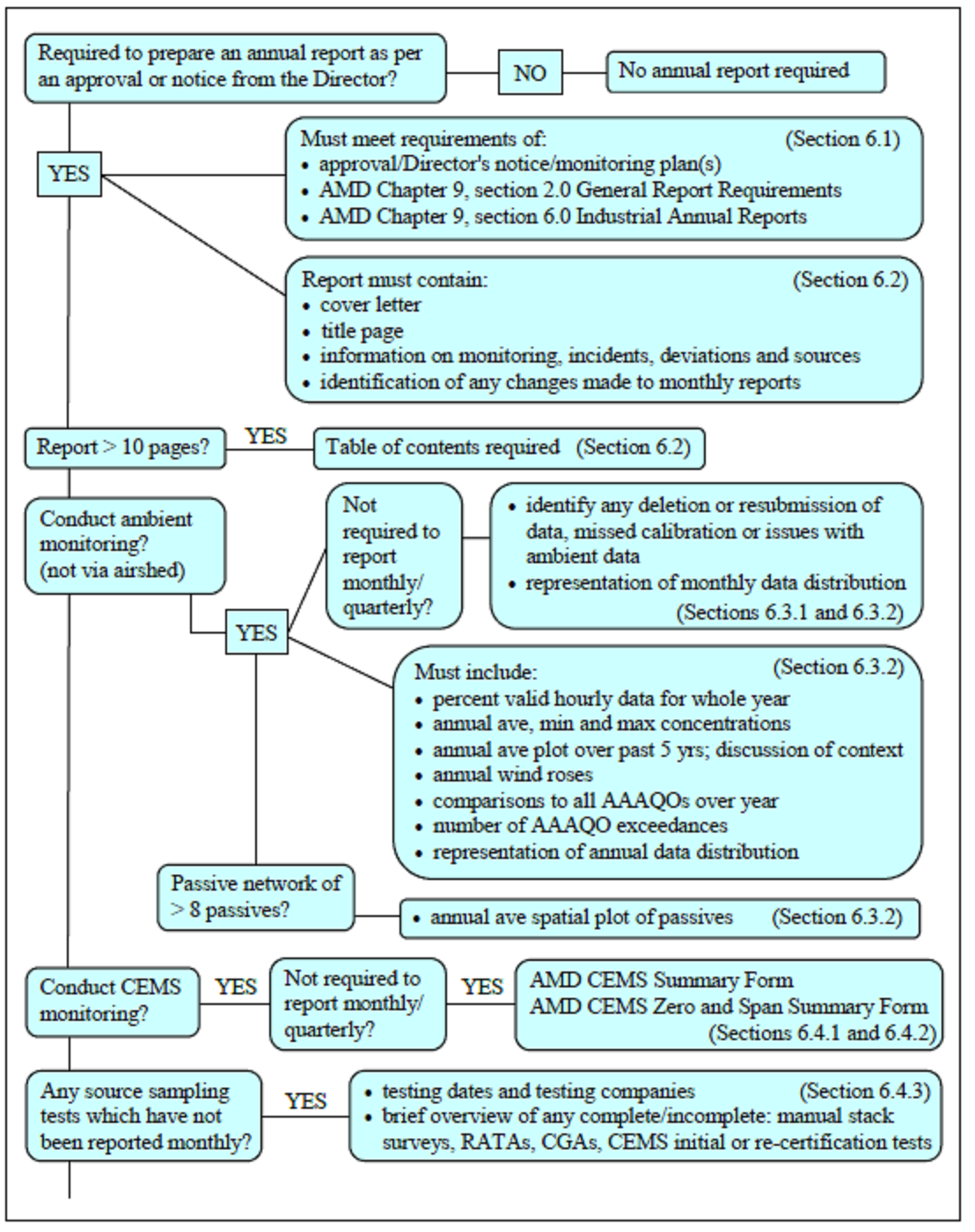 Air quality reporting flowchart for AMD
Air quality reporting flowchart for AMD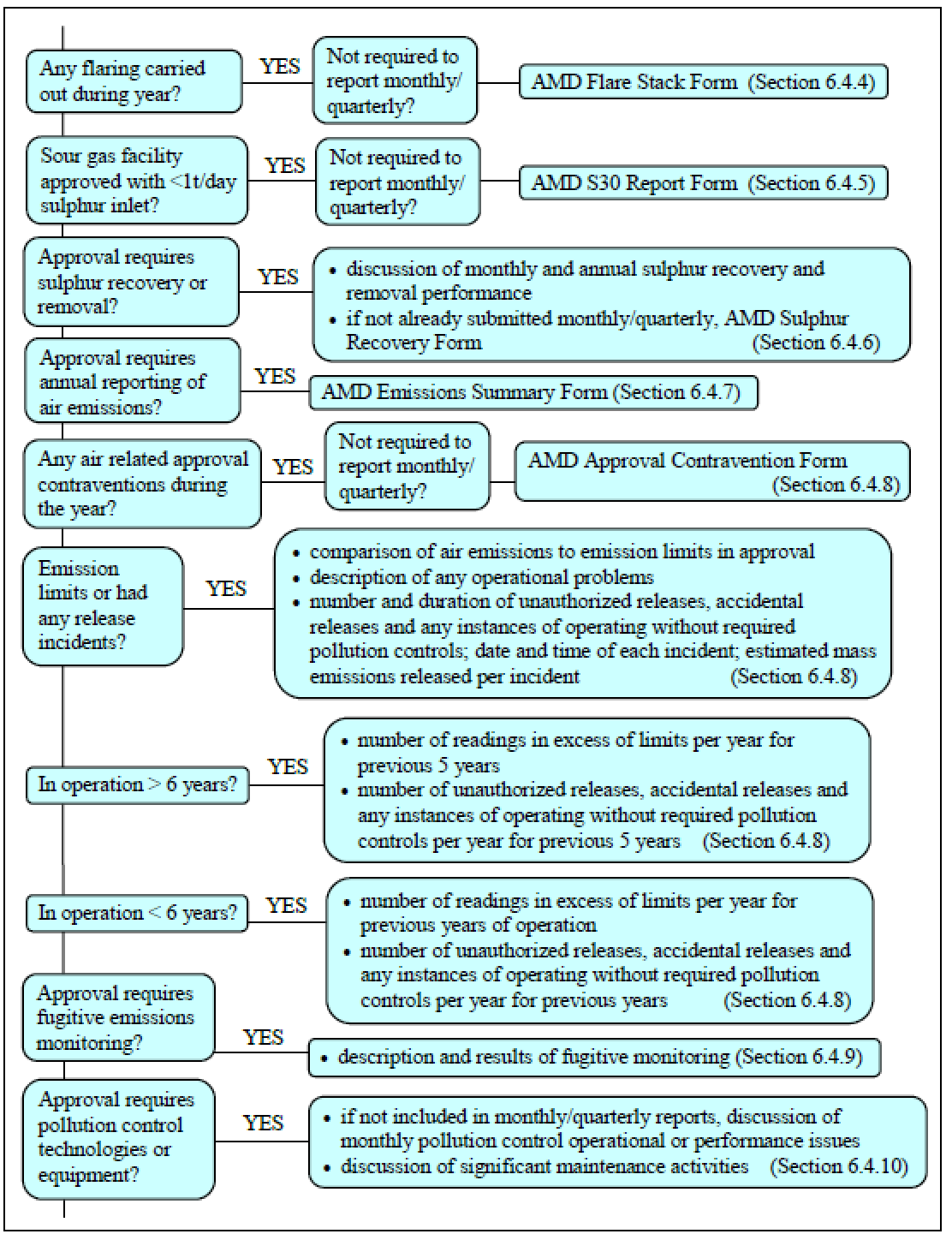 Air quality reporting flowchart for AMD page 2
Air quality reporting flowchart for AMD page 2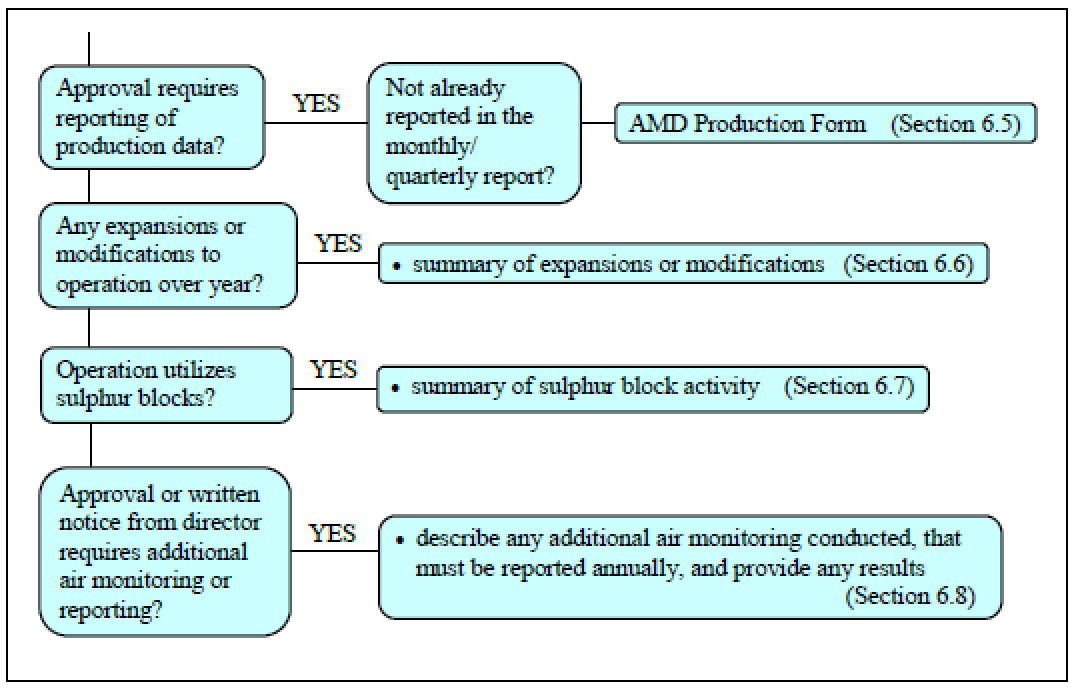 Air quality reporting flowchart for AMD page 3
Air quality reporting flowchart for AMD page 3Reporting Efficiency and Compliance
Here are some tips for improving reporting efficiency and avoiding common compliance issues:
- Collecting and processing emissions data with automated systems. It saves time and reduces errors.
- Make sure all reports follow the same format. It's easier to compile and review data.
- Make sure your team is up to date on the latest regulations and reporting tools. Regular training will help you avoid common mistakes.
- Your software should be able to handle complex data and produce accurate reports.
- Identify and fix problems before they become compliance issues by regularly auditing your data and reporting processes.
- Make sure you're up to date on environmental regulations.
- Get advice from environmental compliance experts.
Here at Calvin Consulting Group Ltd., we're looking forward to helping you stay green. With our services, you'll be an informed and responsible steward of Alberta's air quality. We'll take your air quality reporting to the next level. With Calvin Consulting Group Ltd., you get excellence, precision, and environmental stewardship. Join us on the path to a cleaner, safer world.
Just send Barry a quick message right here.

Knowledge is power when it comes to air quality reporting in Alberta. Calvin Consulting Group Ltd. unlocks that power for you.
AMD Chapter 9 continues with industrial air emissions reporting on this page.
With environmental consciousness at an all-time high, understanding air quality reporting is crucial.
This comprehensive guide to Alberta's air quality reporting regulations is your guide to navigating the intricate web of rules, requirements, and responsibilities.
Here, you get a chance to quickly learn how to maneuver through details of environmental monitoring and compliance in Alberta. This guide empowers you to maintain responsible stewardship of Alberta's air quality, whether you're an industry pro or a concerned citizen. Contribute to a greener, cleaner future.
Do you have concerns about air pollution in your area??
Perhaps modelling air pollution will provide the answers to your question.
That is what I do on a full-time basis. Find out if it is necessary for your project.
Have your Say...
on the StuffintheAir facebook page
Other topics listed in these guides:
The Stuff-in-the-Air Site Map
And,
Thank you to my research and writing assistants, ChatGPT and WordTune, as well as Wombo and others for the images.
GPT-4, OpenAI's large-scale language generation model (and others provided by Google and Meta), helped generate this text. As soon as draft language is generated, the author reviews, edits, and revises it to their own liking and is responsible for the content.
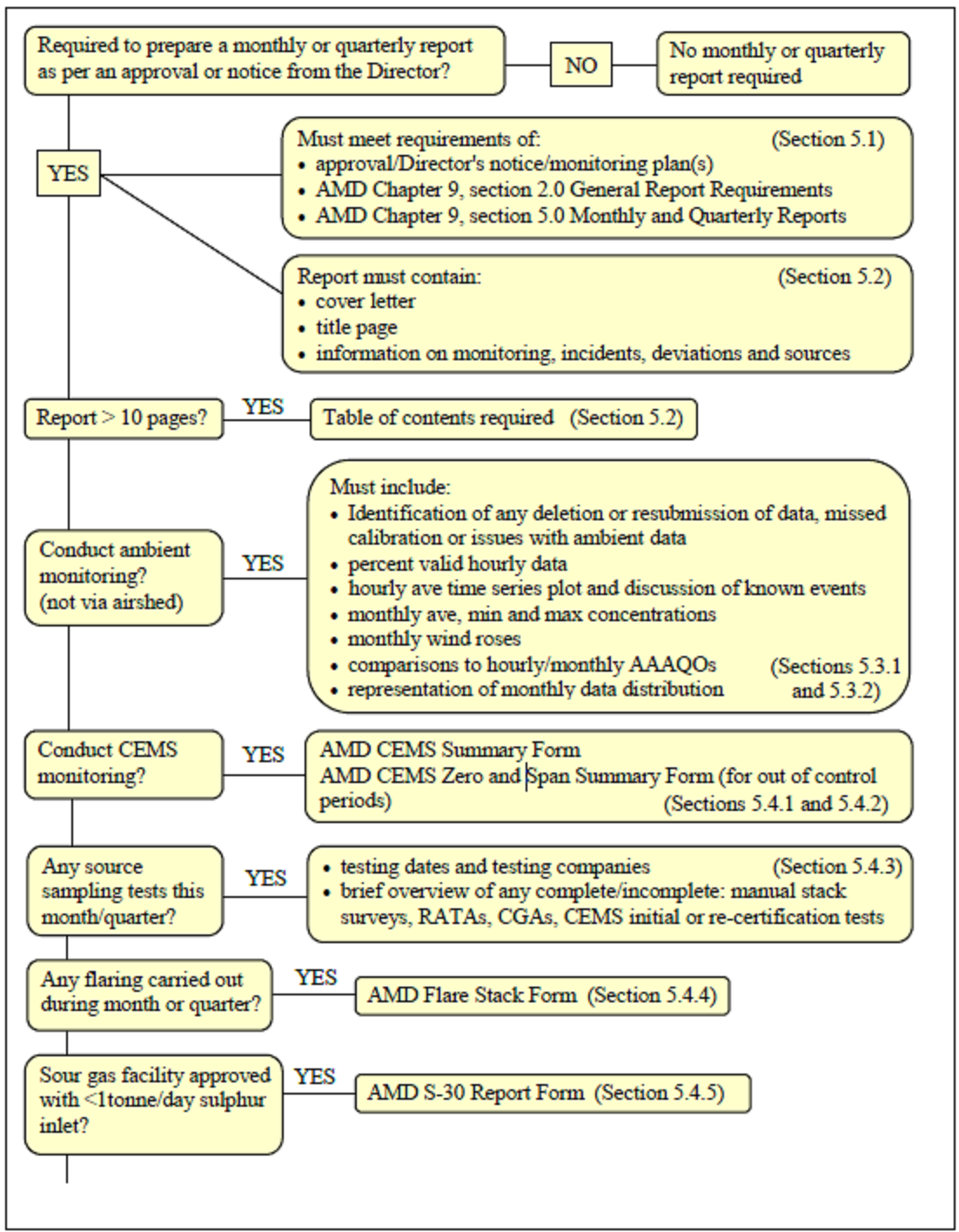
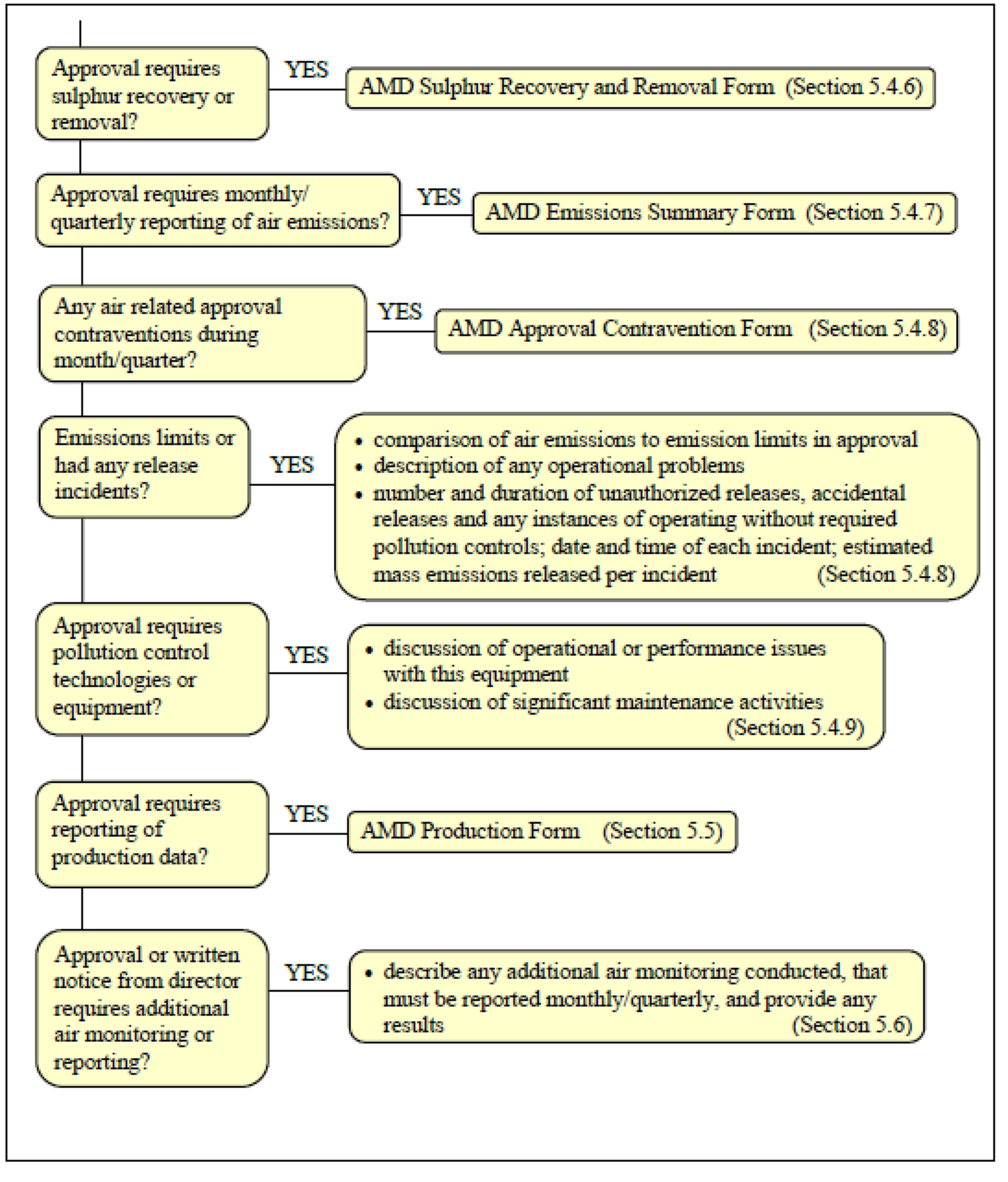


New! Comments
Do you like what you see here? Please let us know in the box below.